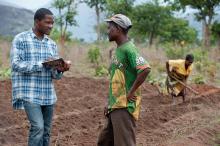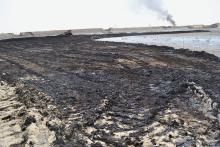Land Library Search
Through our robust search engine, you can search for any item of the over 73,000 highly curated resources in the Land Library.
If you would like to find an overview of what is possible, feel free to peruse the Search Guide.
/ library resources
Showing items 1 through 9 of 34.East–Southeast Asia is currently one of the fastest urbanizing regions in the world, with countries such as China climbing from 20 to 50% urbanized in just a few decades. By 2050, these countries are projected to add 1 billion people, with 90% of that growth occurring in cities.
In the debate on climate change, it is frequently argued that the number of “climate refugees” is going to grow world-wide. So far, however, only little evidence has been provided of links between climate change, environmental changes and migration.
According to the Climate Risk Index, less developed countries are generally more affected than industrialised countries. The countries affected most in 2013 were the Philippines, Cambodia and India. For the period from 1994 to 2013 Honduras, Myanmar and Haiti rank highest.
This report provides an outline of protected areas and biodiversity in the Lower Mekong Basin.
Tropical forage grasses and legumes as key components of sustainable crop-livestock systems in Latin America and the Caribbean have major implications for improving food security, alleviating poverty, restoring degraded lands and mitigating climate change.
China has a longstanding tradition of using biogas for decentralised energy supply. Already, there are nearly 42 million household digesters in the rural areas, a figure set to double by 2020. But the country has even more ambitious plans.
German Development Cooperation has developed an approach for the sustainable production of charcoal that has proved to have a considerable impact in Northern Madagascar.
Soils around the world are degrading rapidly, reducing ecosystem diversity and some important functions, threatening food and other human securities, and increasing vulnerability to climate change. This is a vicious cycle created by and leading to further unsustainable land-use practices.
More than three times as much carbon is stored in soils across the world as it is in the atmosphere, making them one of the most important global carbon sinks.






